Green energy resources will give information about resources energetics.
Renewable energy is produced from some source that is naturally replenished. It is primarily used in one of the following three ways:
– production of electricity: renewables are used to produce electricity that is distributed for residential, commercial and industrial use;
– production of thermal energy: renewable resources, for example, water heated by solar energy, can be used directly to heat buildings;
– manufacture of transport fuels: fuels for privately owned motor vehicles, for public transport and industrial and commercial use.
Green energy resources
1. Hydropower
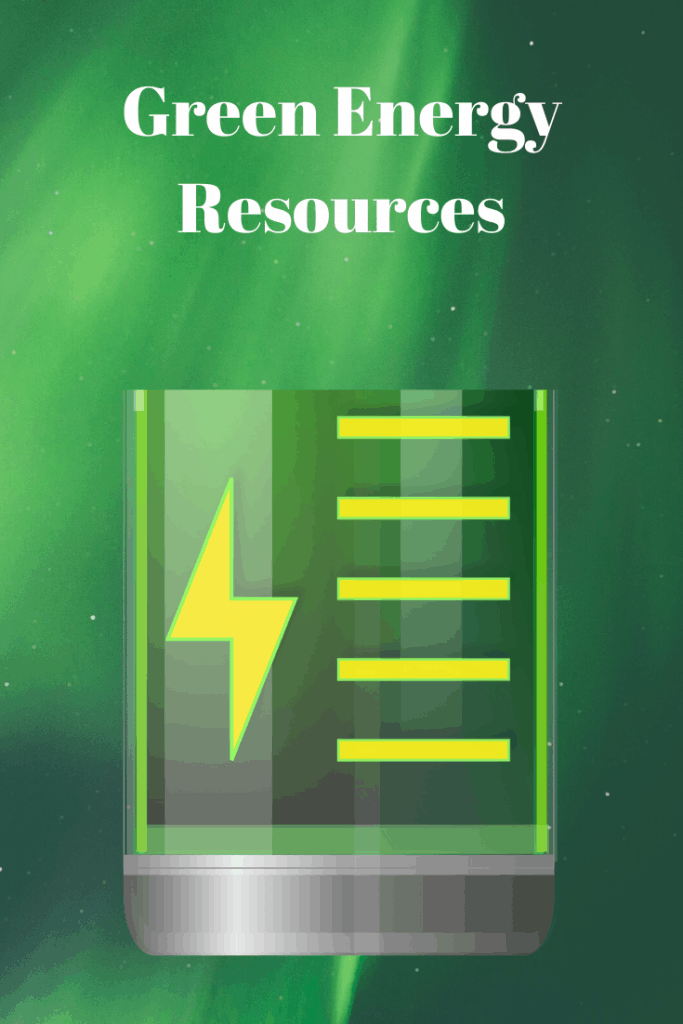
Water is the most common and oldest renewable energy source. It has been used for centuries for energy production. Hydropower produces minimal CO2 emissions, and with the right water source, it can be a permanent source for electricity generation.
There are different forms of electricity production from hydropower:
– river flow energy: electricity is produced without a dam by rotating turbines generating electricity from appropriately directed river flow;
– by a dam: water from a river or other source is partitioned by a dam, and electricity is produced by turning the water from the dam by turbines;
– small and micro-scale hydropower: The technology traditionally used to produce large scale electricity can also be used on a smaller scale. “Micro hydropower” can often be used to supply electricity to communities that are not close to the grid.
2. Solar energy
Solar radiation, or solar energy, is the largest and purest source of energy. The sun is, directly or indirectly, the source of almost all available energy on Earth.
Ever since ancient times, people have used the heat radiated by the sun to heat homes and other buildings. Solar energy can be used to an extent that meets communal needs, with the help of thousands of solar panels or mirrors that feed the grid, or, to a lesser extent, in the form of smaller roof installations that supply individual homes with electricity and/or hot water.
There are different ways of using solar energy:
– solar energy heating: using solar energy to heat water or using materials with specific characteristics to heat or cool buildings;
– solar electricity: converting solar energy into electricity can be done in two ways: by concentrating solar power: where mirrors are used to concentrate solar energy; photovoltaic collectors: in which light is directly converted into electricity by means of cells or panels.
3. Wind Energy
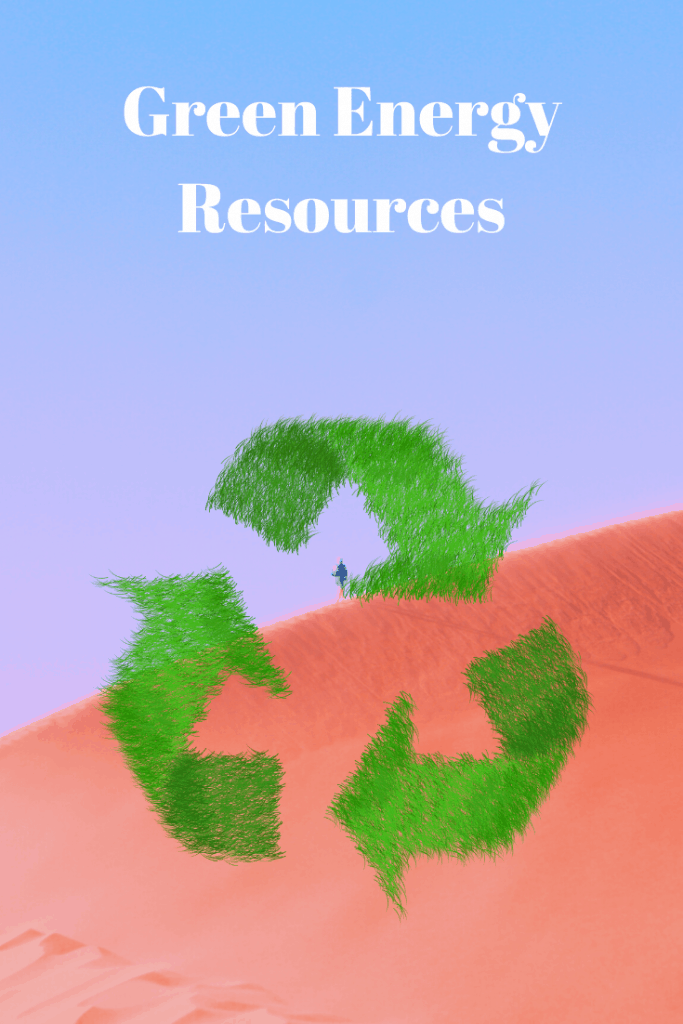
The wind has tremendous power that is occasionally observed through its pronounced destructive power and in the long term, the wind can shape the terrain or cause erosion in some areas.
Wind power has been used for centuries as a source of energy, whether to propel sailboats or traditional windmills in agriculture. Wind energy is an unstable energy source, as the volume of electricity production changes depending on the wind power that drives the wind turbines at any given time. For electricity generation, the wind is often used in conjunction with other renewable energy sources.
4. Geothermal energy
The Earth’s core is much warmer than Earth’s surface.
The heat from the core is carried through rocks and minerals, heating the underground reserves of water and converting that water into steam that can drive turbines and generate electricity.
In some places, steam generated from warm groundwater naturally reaches the Earth’s surface and creates geysers, allowing this energy to be used in a fairly inexpensive and non-invasive way.
Direct use means the use of hot water that erupts or is pumped from Earth. This hot water is used for heating houses or greenhouses, for certain industrial processes and the like.
Indirectly, this energy is used to generate electricity.
Hot water and water vapor are used to start the generator and have almost no emissions.
The advantage is that these types of power plants can be built in a wide variety of environments, from farms, desert areas to forest recreational areas.
5. Ocean energy

It has been recognized for decades that, at least in theory, the kinetic energy generated by ocean motion can be used to generate electricity.
The use of this renewable energy source is still in the experimental phase, but it has true potential.
There are two basic ways to generate electricity from ocean energy:
– Tidal Energy: tidal wave-based technologies are similar to the use of river flow hydropower but use ocean waters;
– Wave energy: waves contain significant amounts of untapped energy; however, harnessing that energy has been a technical challenge.
6. Bioenergy
The term “bioenergy” refers to the use of organic materials of plant or animal origin.
– Traditional biomass: accounting for about 10 percent of all energy consumed on the planet. Traditionally, energy from biomass is obtained by combustion of wood, plant mass or animal waste to heat households and cook food;
– Biogas: Biogas is produced by fermenting biodegradable materials such as animal or vegetable waste. Gas can be used to heat homes and fuel cookstoves just like natural gas;
– Biofuels: the term “biofuels” refers to the practice of growing crops solely for use in energy production, usually as a transportation fuel.
For example, corn or sugar cane can be used to make bioethanol, while biodiesel can be made from vegetable oils and animal fats. In recent years, however, cultivate crops for biofuel production has caused much controversy, as agricultural land is thus moving away from food production, leading to crop shortages, rising food prices, and worsening global hunger;
– Electricity generated from agricultural waste: unlike biofuels, which are often competing for land use for food production, a range of products generated from otherwise disposed of agricultural waste can be burned to produce electricity.
Green energy resources can never disappear, unlike non-renewable ones (fossil: coal, oil and oil derivatives, natural gas as well as nuclear) that were once created, but for now, they cannot be renewed and it is quite realistic to expect that spend one day.
Renewable energy technology plays a very important role in reducing CO2 emissions into the atmosphere and therefore contributes to reducing the greenhouse effect.
It is clean and has a smaller environmental impact than conventional energy technologies.
Why Green Energy
(Information Tips)
You may wonder why green energy in the world? In this article, you will find the answer to this question.
Green energy is a classification that includes all forms and sources that are known to be clean and, therefore, environmentally friendly.
Typical examples of environmental energy sources are geothermal, wind, solar, and water sources.
Nuclear energy can also be classified as green energy because of the amount of energy that it can produce at a minimal cost.
Green energy is becoming more popular day by day because it offers countless benefits.
Environmentally-Friendly
This is one of the main reasons why green energy is becoming increasingly popular.
It has a positive impact on the environment and does not emit emissions that can be harmful to the environment or cause global warming.
The use of clean energy for residential and commercial purposes can help reduce fuel consumption for vehicles, which further reduces carbon emissions.
Thus, it can reduce industrial and electrical pollution.
Reduce Our Dependence on Fossil Fuels
The great thing about using solar energy is that it reduces our dependence on fossil fuels.
The constant increase in fossil fuel tariffs leads to costly electricity bills. Solar technology is a cost-effective option to overcome this troublesome problem, which provides a constant supply of solar energy to meet your energy needs.
Budget-Friendly
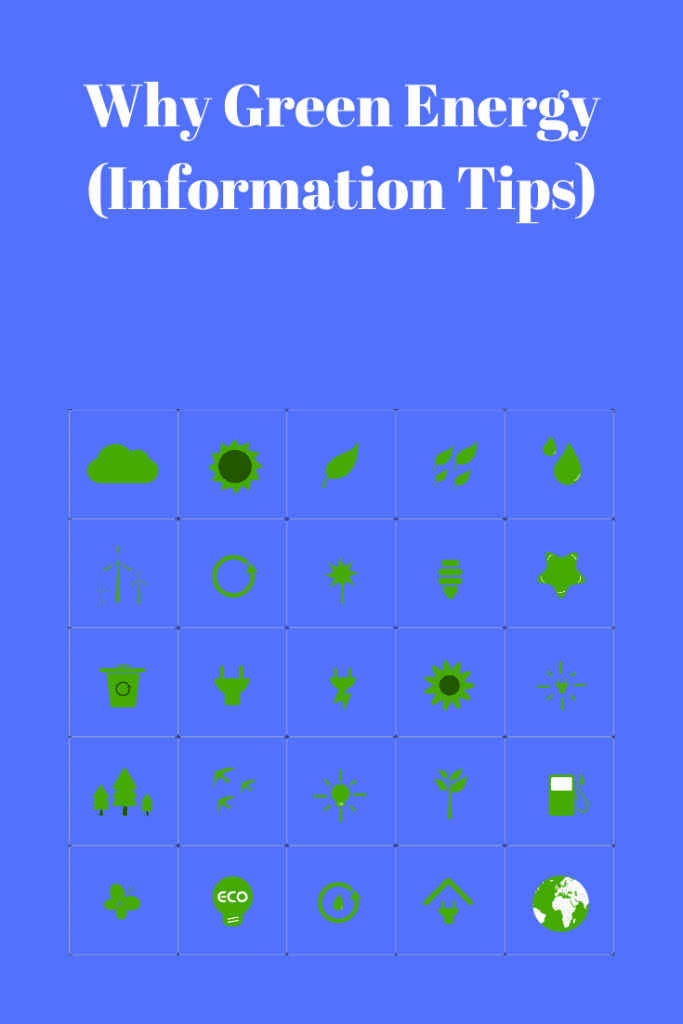
Another key advantage of using solar energy is the fact that it is economical and budgetary and allows you to save money on monthly utility bills. Installing solar panels costs a little more, but after installation, it will generate an infinite amount of energy, which will ultimately save you money.
This is the most reliable and easiest way to significantly reduce monthly energy costs.
The solar energy system produces more energy than daily consumption, so it can be saved for future use.
A solar energy system produces enough electricity to meet our energy needs and can significantly reduce electricity bills.
Sustainable Energy
green energy is a sustainable form of energy. Photovoltaic solar cells use sunlight to generate electricity and constantly provide a sustainable source of energy for long-term daily use.
Energy efficiency
Solar panels are energy efficient and require minimal maintenance.
After installing the solar panel, usually, no fuel or lubrication is required. The solar electric system provides maximum efficiency and does not require fixed costs.
Reliable and Renewable
Reliability is the most important benefit of green energy.
You do not need to worry about replacing any part of the solar power system, as it can generate a huge amount of solar energy with minimal maintenance costs.
Green energy is extremely reliable, safe, and renewable.
Solar panels are self-sufficient and produce inexhaustible energy at low operating costs. Due to this fact, there is no danger from the power panel.
Easy and simple to use.
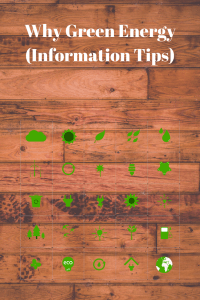
You can easily use solar energy for daily expenses by simply installing a solar panel at home.
Installing solar panels only requires a connection between the power system and the battery power system, which you can do yourself.
However, for a safe installation, it is recommended that you purchase a professional solar installation.
No Power Outage
Because solar panels are self-efficient and can produce inexhaustible energy, concerning; No need to worry about a power failure.
Benefits of Green Energy
Less amount of air pollutants in the atmosphere

The activities of humans on this planet have caused our atmosphere to have a lot of carbon dioxide as well as other global warming emissions which are very harmful to future generations.
These gases that are trapped in the atmosphere act like a blanket that we use to warm ourselves when we are cold.
Consequently, the temperature of the planet increases as the heat is also trapped which in turn causes things such as the rise of the sea level, drought, storms, and ultimately extinction.
In America, approximately 29 percent of global warming emissions come from the electricity sector and the majority of the emissions are caused by the burning of fossil fuels such as natural gas as well as coal.
On the other hand, most of the green energy sources that are available today produce small to no global warming emissions and green energy is the way for future generations to be able to survive.
Even when the life cycle emissions of green energy are taken into account, the emissions of the global warming that are associated with green energy are minimum.
Better health for people
The water and air pollution that is caused by the burning of fossil fuels has caused a lot of health problems.
These health problems are usually connected to respiratory problems, cardiovascular diseases, neurological damage, premature death, cancer, as well as other major health problems.
The pollution affects the quality of life of the majority of the people and a study conducted by Harvard University shows that the costs of the life cycle and the effects of coal on public health to be approximately 74.5 billion dollars each year.
That is the same as 4.35 cents for every kilowatt-hour of electricity that is generated.
The majority of the bad health effects are mainly caused by water and air pollution which green energy does not generate but are produced by the burning of fossil fuels such as natural gas and coal which are proven to be affecting the health of people.
Therefore, we need to switch to more environmentally friendly alternatives which have the potential to reduce the level of air and water pollution and at the same time improving the health of the people.
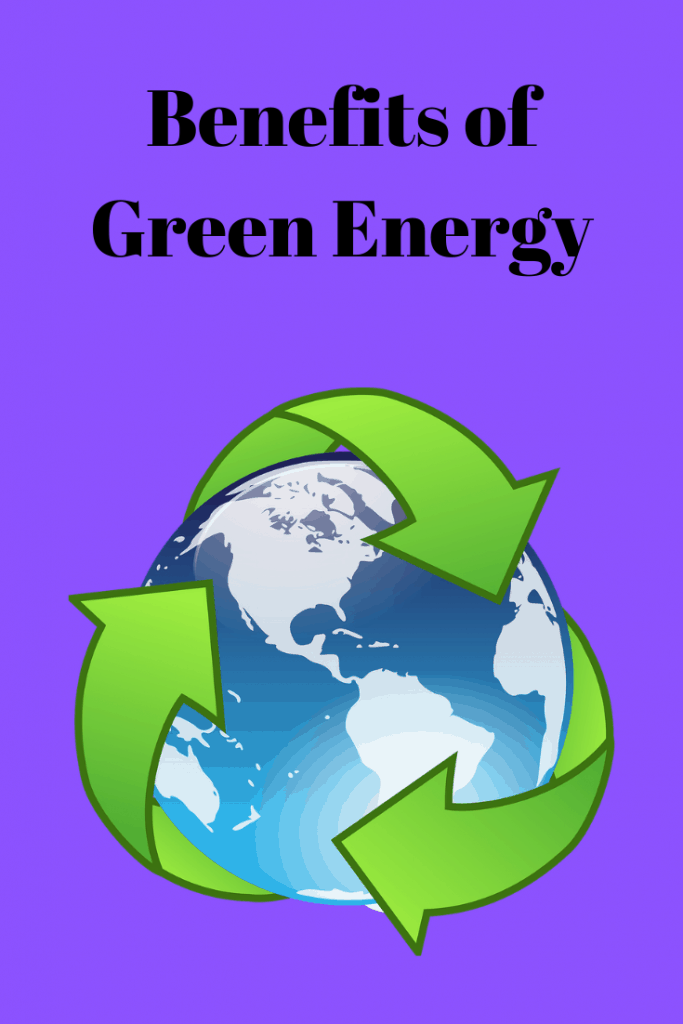
A reliable source of energy
Sunny skies, strong winds, heat from the earth, abundant plant matter, as well as fast-moving water each can provide a constant and wide replenished supply of energy.

A minor percentage of the America electricity is being generated from these green sources but that surely has the potential to increase.
Recent studies have repeatedly shows us over and over again that green energy can provide a large amount of electricity in the future even after taking into accounts the future potential constraints that may need to be kept in mind.
On top of that, a study made by the government has also shown that green energy could contribute a large portion of the electric supply which makes up around 80% by the year 2050.
Because there is no planet B: Green Energy the solution
Because there is no planet B: Green Energy the solution will explain why do we need green energy.
Our planet is screaming for help, we can see at this moment so many problems associated with our environments like the melting icecaps, rainfall’s decrease, temperature increase, desertification and much more.
All the situation we are living right now is as a consequence of the contamination mainly produced by the energy industry.
Therefore, we are becoming clearer and more evident, that the mode of fossil fuel-dependent energy production is practically unsustainable and, at the same time, not very respectful to our planet.
It is then when we have the situation and doubts about how to stop this situation and that’s where the importance of green energy for the environment comes into play.
What are the green energies?
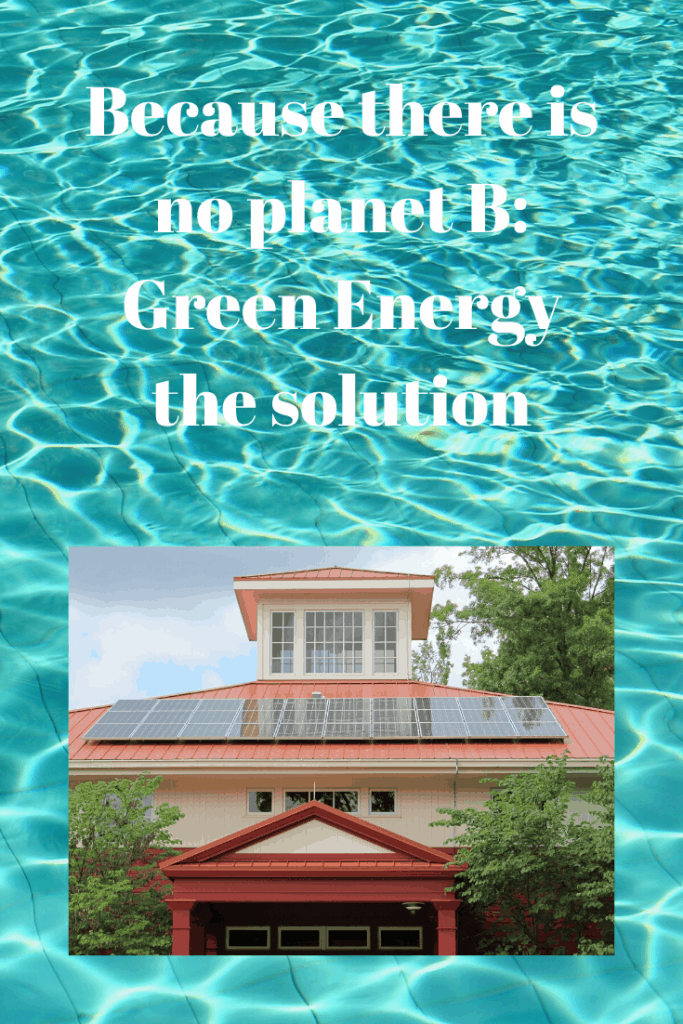
As the name implies, are those that do not produce polluting or contamination to the environment and in consequence, are healthy. These are energies that are obtained from different natural sources, such as the sun, wind or rain. In all cases of clean energy, we are also talking about that potentially, will never run out.
These types of energies are the ones that are currently being promoted with the aim of curbing and even counteracting the effects of climate change.
This process is what is known as the energy transition, which consists of the transition from a carbon-based sector (obtained by burning fuels such as coal and oil) to one based on green energies occupy a preponderant role.
Which are green energies?
Although green energies can take many forms and it is an industry looking forward to improving and change and progress, the most widespread are currently as follows:
Solar energy
It is obtained through sunlight and heat. It can be in two ways depending on the use of light or heat.
In the case of taking advantage of sunlight, this is done through solar panels, which, in broad strokes, are devices capable of transforming the photons of light into an electric current that can be used for human activities. This is called photovoltaic.
In the case of taking advantage of the heat of the sun. This type is used through large installations with many mirrors that direct and concentrate the sun’s rays at the same point, so that this point can be heated a lot and, thus, activate a mechanical system that is capable of producing movement which will later be transformed into useful electricity.
Photovoltaic panels: these panels transform the sun’s rays into electricity, which is stored in batteries or accumulators and can even be incorporated into the electricity grid.
Thermodynamic technology: it takes advantage of solar radiation as a source of caloric energy, using it to heat fluids that generate pressurized water vapor, and can subsequently use it in electricity.
Thermal technology: uses the sun’s energy to obtain heat, used to heat buildings, obtain hot water or for industrial applications.
Hydraulic energy
It is obtained from the use of river flow and the natural movement of water. In this case, it is obtained by installing turbines on the banks or dams of the rivers, which allows the turbines to move just like watermills.
Later, this movement is transformed into electricity for domestic and industrial use.
Wind energy
This is obtained from the wind. The system is similar to that of hydraulic energy but, on this occasion, windmills (also called wind turbines) are installed at points where the wind is abundant, such as esplanades on land or in coastal areas above the sea.
The wind spins the windmill blades and, in this way, the movement can be converted back into electricity that is sent to the power grid.
Seawater energy
It is obtained thanks to the use of the tides. This is achieved by installing an alternator that, taking advantage of the ups and downs of the tides, transforms the movement of the sea into electricity.
Geothermal energy
In this case, it is obtained from the use of heat from inside the Earth. By means of an installation that captures the heart, it is possible to activate a mechanical system that in turn, is responsible for producing the usable electricity.
Are nuclear energy and biofuels green energy?
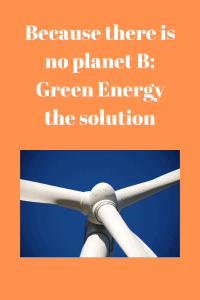
Nuclear energy is very particular, since it is not associated with carbon and, therefore, it might seem at first that it would be green energy.
However, it is not exempt from producing highly polluting waste. In this case, radioactive waste that has to be conveniently isolated to avoid very serious damage. Therefore, it cannot be considered as a pure one.
On the other hand, we find biofuels. This type is obtained from the burning of fuels that are obtained from the reuse of organic matter.
This can be done by burning wood such as pellets, or by burning biogas, a type of gas that is obtained from the rotting of organic matter under certain circumstances.
This promises to have a relevant role in the future since they are much more environmentally friendly fuels.
In fact, because it can be obtained from organic matter, at least in principle, it could be considered as full-fledged green energy.
However, it is important to keep in mind that, with their burning, greenhouse gases (GHG) are released, although in much smaller quantities than when coal or petroleum products are burned.
Therefore, despite being considered by many as renewable energy, you cannot speak technically of it as such.
Green energies: importance, advantages, and disadvantages
Green energies arise as an alternative to the progressive decrease of non-renewable resources (fossil fuels: coal, gas, and oil), and at the same time as a solution to mitigate climatic problems in which we find ourselves.
Thus, the use of green energies has several advantages since they do not produce waste or pollutants, thus preventing the deterioration of the environment and contributing to curb global warming.
In addition, this type of energies offers the same efficiency and quality as the energies used today, more polluting.
The industrial and business sector also benefits from its use, since, at an economic level, they mean savings in waste management, given that it does not generate waste, so it is not necessary to have spaces or licenses for storage and destruction.
However, they also have certain drawbacks, such as the large surface territory occupied by facilities such as solar panels or wind farms, as well as the visual and landscape impact, although these are minorities in comparison with the multiple advantages they present.
Conclusion
Using the green energy is the perfect solution to tackle growing global warming and reduce dependence on fossil fuels.
It is a safe alternative energy source that helps to create a clean atmosphere and does not hurt human health.
Indeed, green energy is a renewable and cost-effective source of energy, which will undoubtedly become more frequent in the coming years.
